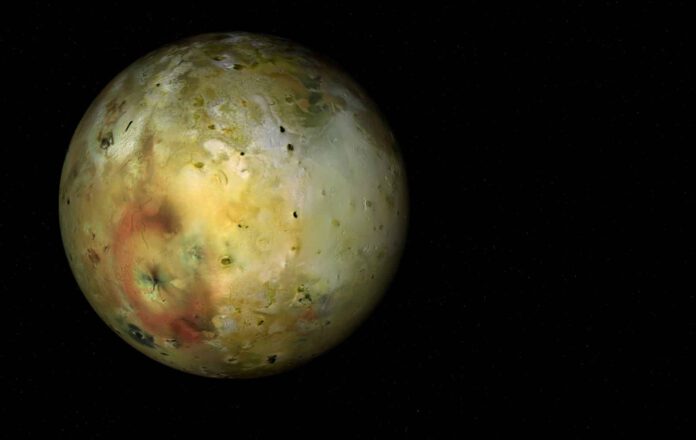
Discovering erupting volcanoes and a lava lake that forms the perfect mirror: after an extensive analysis by NASA, it has become evident that Jupiter’s pizza moon offers numerous secrets for scientists to uncover.
Io, one of Jupiter’s moons, is filled with surprises. This is the overarching conclusion that scientists seem to be making after analyzing data from two flyby missions. The first flyby last December captured several global photos by the Juno spacecraft. These images are particularly remarkable because they were taken from very close range – just 1500 km from the surface. During a later Juno flyby in February, more extraordinary photos of Io were taken. This time, the images reveal two enormous smoke plumes, likely indicating volcanic activity. NASA scientists have now further analyzed the previously obtained data from these two flybys. Based on this data, two animations have been created. Lead researcher Scott Bolton presented these results at the European Geophysical Union General Assembly on Wednesday, April 16, in Vienna.
Lava Lake
New animations strike a chord with imagination. The first animation features a lava lake, Loki Patera. Bolton adds, “We’ve managed to get some close-ups of a lava lake that’s over 200 kilometers long. We also call this lake Loki Patera. In the images, you can see unique islands in the middle of this lake. The lake itself may consist of magma and is surrounded by warm lava. Our instruments detected a spectacular reflection from the lake, suggesting some parts of Io’s surface are as smooth as glass. This reminds us of obsidian glass which we sometimes encounter on Earth”. The second animation showcases Steeple Mountain, best described as an enormous mountain.
Galileo
Snapping stunning shots of Jupiter’s pizza moon is, of course, delightful, and the results are certainly impressive. However, that’s not the main reason Juno traveled to this region. The spacecraft’s main mission is to learn more about the biggest planet in our solar system: Jupiter. The goal is to peek beneath Jupiter’s thick cloud cover and provide more insight into the gas giant’s composition, origins, and evolution. Jupiter’s formation remains a big mystery to scientists: during an earlier study, the Galileo spacecraft descended into Jupiter’s atmosphere in search of water. Instead, it found far warmer temperatures than predicted and unusually dry air. Bolton concludes, “The Galileo spacecraft did fantastic work, but the data (concerning the amount of water in the atmosphere) did not match our predictions. Thanks to recent measurements with the MWR (an instrument onboard Juno), we can now establish that Galileo was in an exceptionally dry, desert-like region.”
Thus, Juno helps researchers put more and more puzzle pieces in their place – not only about Jupiter but also about the intriguing moons that this gas giant boasts.











